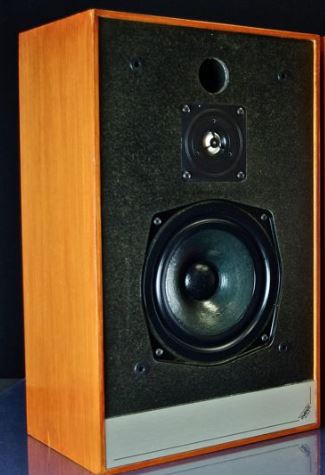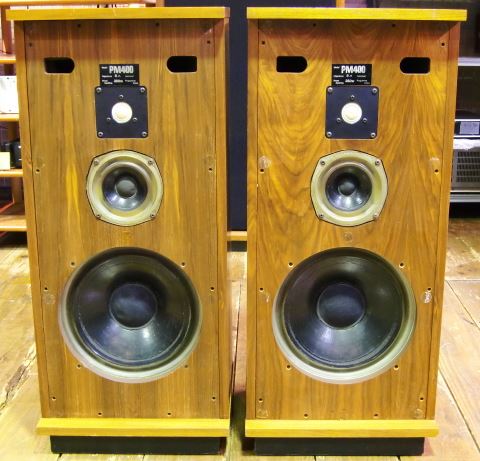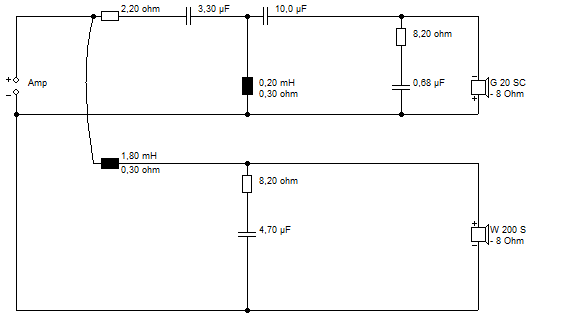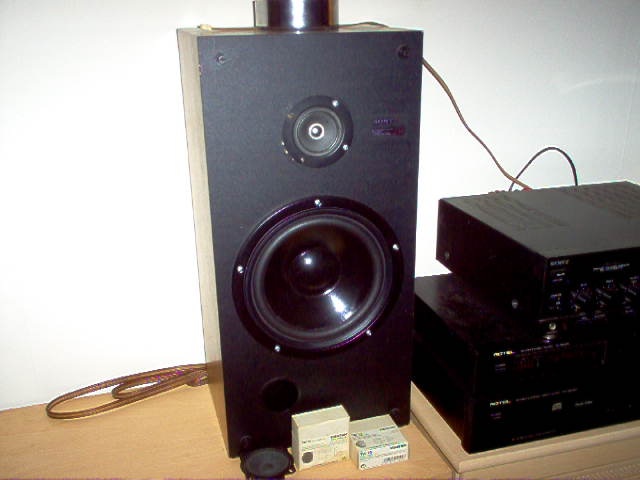Why compared to a soft dome of the same size and geometry? Examples would be nice if you have them.Of axis response will be messed up. They will beam like laser. Don't do it, you have been warned.
On the contrary. Of axis response will be messed up. They will beam like laser. Don't do it, you have been warned.
Thanks for your reply.
I hear what your saying, but whilst the vast majority of tit or other exotic dome tweets do have phase shields some of which do not appear to be of any use as a phase shield as I understand it. Some, and often high enders do not. I,m suggesting that sometimes a dome protector is described as a phase shield when it is not necessarily so. Furthermore I see none symmetry in some designs which begs the question. Which way up should they be fitted ?.
All depends on the particular dome. If small dome tweeter was designed without any shield, like hiquphon, with wide dispersion, because its very small, and sphere like, there is no beaming.
If its bigger dome with relatively flat dome, and it was designed with phase shield, it will beam without phase shield, which acts like dispersant. It still will beam to some degree, they all do at high frequencies. Removing it would result in uneven of axis response which is audible. To me for sure. Having uneven of axis results in different direct vs reflected sound, which is fatiguing.
SirDystic, i suggest you measure it with and without and see for yourself. Should be fun.
If its bigger dome with relatively flat dome, and it was designed with phase shield, it will beam without phase shield, which acts like dispersant. It still will beam to some degree, they all do at high frequencies. Removing it would result in uneven of axis response which is audible. To me for sure. Having uneven of axis results in different direct vs reflected sound, which is fatiguing.
SirDystic, i suggest you measure it with and without and see for yourself. Should be fun.
All depends on the particular dome. If small dome tweeter was designed without any shield, like hiquphon, with wide dispersion, because its very small, and sphere like, there is no beaming.
If its bigger dome with relatively flat dome, and it was designed with phase shield, it will beam without phase shield, which acts like dispersant. It still will beam to some degree, they all do at high frequencies. Removing it would result in uneven of axis response which is audible. To me for sure. Having uneven of axis results in different direct vs reflected sound, which is fatiguing.
SirDystic, i suggest you measure it with and without and see for yourself. Should be fun.
Ill do that, nothing much else to do at the moment, should be fun and educational.
Ill post results...
There's a remarkable use of a Phase-Plate in the SB Acoustics SB26CDC-C000-4 / Ceramic tweeter:
SB26CDC-C000-4 / Ceramic - Sbacoustics
Ceramic is the word SB use for anodized aluminium dome. Where has the usual worrisome metal breakup around 25-30 kHz gone?
If you look 60 degrees off-axis, the breakup has been pointed off-axis! Makes the on-axis response almost flat. And most people look at the on-axis.
SB26CDC-C000-4 / Ceramic - Sbacoustics
Ceramic is the word SB use for anodized aluminium dome. Where has the usual worrisome metal breakup around 25-30 kHz gone?
If you look 60 degrees off-axis, the breakup has been pointed off-axis! Makes the on-axis response almost flat. And most people look at the on-axis.
If you're going to destroy a unit to do a study, make sure you don't waste it. A response measurement will tell you nothing other than maybe indicating a difference.
No AllenB, I,m going to print a faceplate and swap it temporarily. It will be the same but without the triangular shield, Guess I,m bored...
There's a good discussion of phase shields here: Purpose of a phase shield? -
Techtalk Speaker Building, Audio, Video Discussion Forum. From post #3:
"The term phase shield comes from the fact that it is shielding the on-axis response from the output of the dome at and near the tip. The reason is because the speed of sound is far higher in the hard dome material, so it is emitted from the tip area and actually arrives at the reference (measurement or listening) point before the signal that is emitted from the rim area.
What this means is that the signals (rim vs. tip) are not in-phase at higher frequencies, so there is they start to combine destructively rather than constructively."
There's a link in that post with measurements with and without a phase shield.
Techtalk Speaker Building, Audio, Video Discussion Forum. From post #3:
"The term phase shield comes from the fact that it is shielding the on-axis response from the output of the dome at and near the tip. The reason is because the speed of sound is far higher in the hard dome material, so it is emitted from the tip area and actually arrives at the reference (measurement or listening) point before the signal that is emitted from the rim area.
What this means is that the signals (rim vs. tip) are not in-phase at higher frequencies, so there is they start to combine destructively rather than constructively."
There's a link in that post with measurements with and without a phase shield.
It's not shielding but mere redirecting. The extra pathway from the dome center takes care of the initial pathway difference.
@System7 Not so sure about that redirecting the breakup. The H1212 and other metal domes without phase shield exhibit comparable behavior. More likely we witness the suckout from the output of both sides of the dome, cancelling each other off axis. Hence it's a dip, followed by the characteristic 'sinoidal' pattern.
[Edit]Even quite sure of that, since the 30 degrees suckout does so at about 36k, which would follow from some simple geometric calculations.
@System7 Not so sure about that redirecting the breakup. The H1212 and other metal domes without phase shield exhibit comparable behavior. More likely we witness the suckout from the output of both sides of the dome, cancelling each other off axis. Hence it's a dip, followed by the characteristic 'sinoidal' pattern.
[Edit]Even quite sure of that, since the 30 degrees suckout does so at about 36k, which would follow from some simple geometric calculations.
Last edited:
There's a good discussion of phase shields here: Purpose of a phase shield? -
Techtalk Speaker Building, Audio, Video Discussion Forum. From post #3:
"The term phase shield comes from the fact that it is shielding the on-axis response from the output of the dome at and near the tip. The reason is because the speed of sound is far higher in the hard dome material, so it is emitted from the tip area and actually arrives at the reference (measurement or listening) point before the signal that is emitted from the rim area.
What this means is that the signals (rim vs. tip) are not in-phase at higher frequencies, so there is they start to combine destructively rather than constructively."
There's a link in that post with measurements with and without a phase shield.
It's not shielding but mere redirecting. The extra pathway from the dome center takes care of the initial pathway difference.
@System7 Not so sure about that redirecting the breakup. The H1212 and other metal domes without phase shield exhibit comparable behavior. More likely we witness the suckout from the output of both sides of the dome, cancelling each other off axis. Hence it's a dip, followed by the characteristic 'sinoidal' pattern.
[Edit]Even quite sure of that, since the 30 degrees suckout does so at about 36k, which would follow from some simple geometric calculations.
Excellent gentlemen, these I find most helpful... Thankyou..
There's a remarkable use of a Phase-Plate in the SB Acoustics SB26CDC-C000-4 / Ceramic tweeter:
SB26CDC-C000-4 / Ceramic - Sbacoustics
Ceramic is the word SB use for anodized aluminium dome. Where has the usual worrisome metal breakup around 25-30 kHz gone?
If you look 60 degrees off-axis, the breakup has been pointed off-axis! Makes the on-axis response almost flat. And most people look at the on-axis.
I see that there is more to these than meets the eye. I would doubt very much that I could hear these goings on my ears don't go much past 15k now days. however as I alluded to in my opening posts a narrower beam could be of benefit at frequencies I can hear. The room is awkward to say the least. A big open plan kitchen forward and left of left channel. and a huge TV on adjacent wall forward and right of right. The TV is obvious to my hearing higher frequencies seem like they are coming from it from time to time, as for the kitchen and the vast array of girly things in it, well I could imagine if not hear..
Can you maybe see now my rationale for experimentation..
Treating the room for reflections is too problematic and very low in WAF
Last edited:
I suspect phase plates don't do much except keep kiddies' sticky little fingers from pressing in the domes...
Isophon made two versions of their plastic tweeter, the KK8 and the KK10.


Anyway, you can tame a tweeter's top end electrically:

Add a 7.5R/0.68uF Zobel for most 8 ohm domes.

Another trick is to use a cone tweeter. Terrible off-axis dispersion, TBH...
Isophon made two versions of their plastic tweeter, the KK8 and the KK10.
Anyway, you can tame a tweeter's top end electrically:
Add a 7.5R/0.68uF Zobel for most 8 ohm domes.
Another trick is to use a cone tweeter. Terrible off-axis dispersion, TBH...
Good one Pico and Moondog. I know I,m not alone... @ System7, I,m guessing in some scenarios the plate being removed could be beneficial, this is what I want to try.the configuration I have already has a cone that rolls out 5 or 6k from memory, tweet takes over from there, It,s definitely the tweet causing the sometimes distracting reflections, If I can minimize this without a civil works program, It,s worth the experiment ...
- Home
- Loudspeakers
- Multi-Way
- Question about phase shield on titanium tweets
